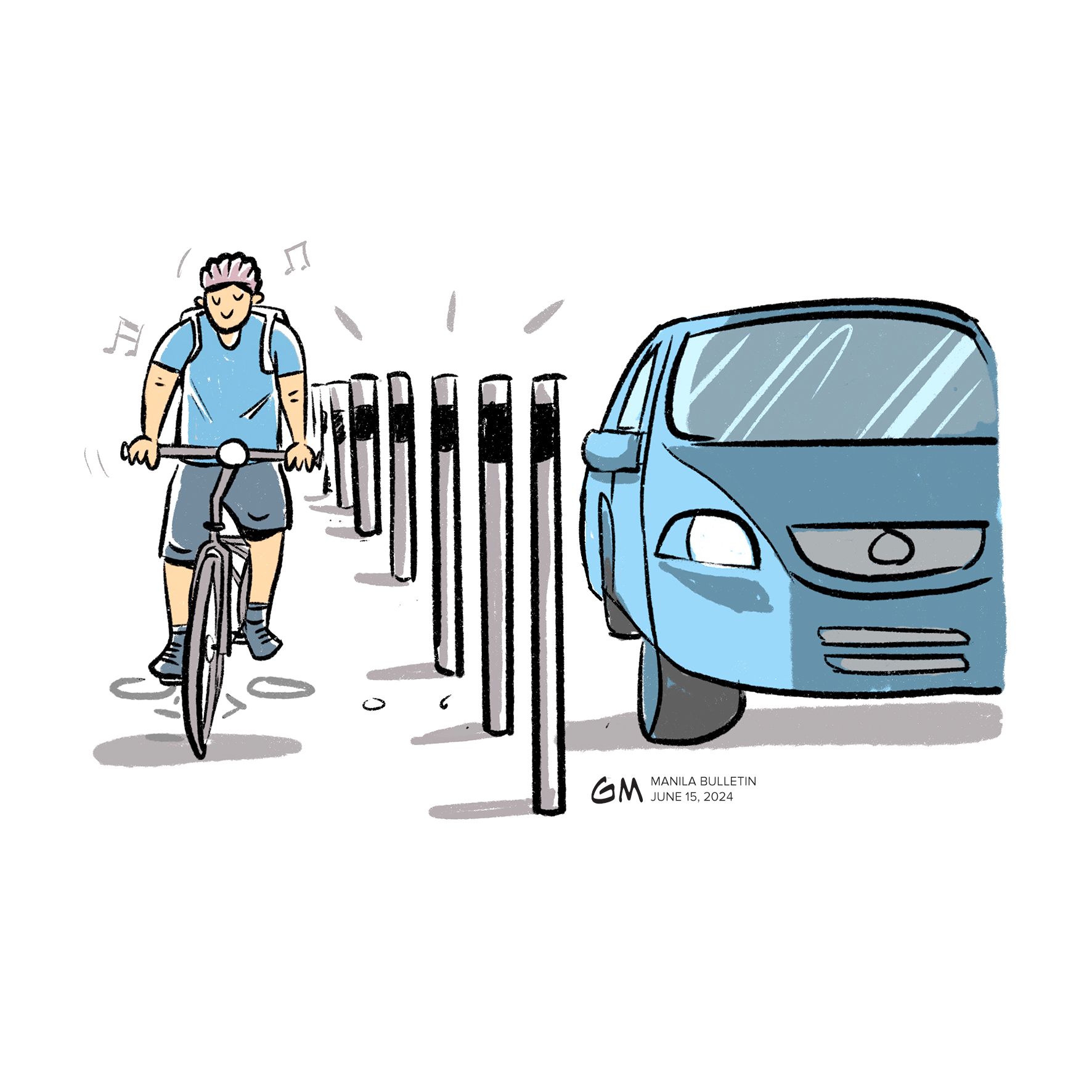
By 2028, the Department of Transportation (DOTr ) sees the completion of 2,400 kilometers of bike lanes around the country. The government’s commitment to prioritize active transport is in line with the National Transport Policy (NTP) and the Philippine Development Plan 2023-2028 (PDP).
President Marcos recently announced that the national government will prioritize active transport by creating facilities such as “safe walkways and secured bike lanes to promote healthier and more sustainable modes of travel.”
This is good news for those who bike to work and not only for leisure, and could entice those who prefer biking as a mode of transportation but are unable to do so because of the unsafe infrastructure. In most bike lanes, only a solid line on the road separates the bikers from the motorized vehicles which include sedans, SUVs, buses and trucks.
Biking to work became popular during the pandemic but slowly faded out after public transportation and private cars came back on the roads.
Active transport, which involves walking, cycling and other physical modes of travel to work, school and other destinations, will be supported by infrastructure that will protect bikers and pedestrians. The bike lanes which will form the 2,400-km network will be protected from motor vehicles, according to the plans which are already manifested in the bike lanes already completed in some parts of the country. A ₱5 billion fund has been allocated for the project.
“We will construct bike lanes all over the country. We are prioritizing major cities then the adjacent municipalities,” DOTr Secretary Jaime Bautista said. At present, there are bikeway programs in Davao and Tagum, Manila, Quezon City, Lipa, San Fernando in Pampanga and Laoag City.
Bautista, who is strongly pushing the program, sees active transport such as cycling and walking, as mobility that can reduce traffic congestion and also benefit health and reduce carbon emissions.
One of the walkway projects will be the EDSA Greenways Project that will build covered elevated pedestrian walkways leading to major transport stations in Balintawak and Cubao in Quezon City, Guadalupe in Makati and Taft Avenue in Pasay City.
The government’s program may be too far from getting anywhere near the top biking cities in the world, but it has started and slowly, mobility will have a different pace.
Netherlands is considered the most bicycle-friendly country in the world, with Amsterdam as the bicycle capital of the world. According to Euro News, 43 percent of the Dutch population take at least one bike ride each day, while 26 percent go cycling a few times each week.”
Denmark is known as the second most bike-friendly country in the world, “with only 18 percent of the population not using a bicycle.”
To get anywhere near those figures, we have to start supporting the active transport program. Companies could build facilities to encourage more employees to bike to work, like bike racks in the parking areas and shower rooms for the bikers. At present, there are local government units that have built bike racks and have deployed traffic aides to clear bike lanes. Meanwhile, individuals can start rethinking mobility and include biking and walking to destinations.